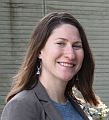BEYOND THE GUIDEBOOK 2022 / PART B: “We eventually concluded that operationalizing asset management would involve four separate, interconnected initiatives that would be the pathway for our journey toward Sustainable Service Delivery. They coalesced into what we locally refer to as The 4C’s – Collaboration, Capacity, Culture, and Council,” stated David Allen, retired Chief Administrative Officer, City of Courtenay

Sustainable service delivery is how communities can bridge the gap, or disconnect, between short-term and long-term thinking. Sustainable service delivery occurs alongside associated evolution in community thinking. Incremental in nature, it is a continuous quality-improvement process. “It is all about building trust between Council and staff, keeping in mind what can realistically be accomplished by an organization, and being clear about the limitations of the current state-of-practice and knowledge and our ability to explain what the numbers mean in that context,” stated David Allen.
BEYOND THE GUIDEBOOK 2022 / PART C: “The Ecological Accounting Process is a powerful communication tool to elevate the importance of local policies and investment to protect and restore riparian areas for the benefit of our communities,” stated Julie Pisani, Program Coordinator for the Nanaimo region’s Drinking Water & Watershed Protection Program

“In the process of completing the Ecological Accounting Process for the Millstone River, municipal and regional interests were brought together with community stewardship sector perspectives and academic research capabilities. Everyone became versed in the common language of natural assets and can now bring that forward in the ongoing collaborative work ahead. Not only were we able to assign a proxy value to the riparian corridor land area, but we also connected this to an understanding of the integrity of its current condition — and compared a riparian deficit to an infrastructure deficit / liability,” stated Julie Pisani.
BEYOND THE GUIDEBOOK 2022 / PART D: “Moving beyond traditional engineered infrastructure asset management to also account for nature’s services will help influence ‘standards of practice’ and represent a leading-edge evolution in how infrastructure is planned, financed, implemented and maintained in BC,” wrote Wes Shoemaker, former Deputy Minister, in a letter to the Partnership (February 2016)

“The Partnership’s efforts to bring together five regional district to implement the Georgia Basin Inter-Regional Educational Initiative has been particularly successful. This program is effectively demonstrating how to align regional and local actions with the provincial policy, program and regulatory framework. The Ministry of Environment appreciates that the Partnership for Water Sustainability embraces shared responsibility for ‘Stormwater Planning: A Guidebook for British Columbia’ and is also adding depth to the Guidebook through the Beyond the Guidebook Series,” wrote Wes Shoemaker.
BEYOND THE GUIDEBOOK 2022 / PART E: “Future research and planning should be informed by a new broad definition of green infrastructure, one that focuses on the relations between ecological and built infrastructure systems to facilitate the production of social benefits,” stated Zbigniew Grabowski, Socio-Ecologist with the Cary Institute of Ecosystem Studies, New York

“We had this moment of realization about the diversity of plans when it clicked in our minds about analyzing all the plans in terms of three big buckets: something that is very stormwater-focused, something that is very land-focused, and something that is trying to integrate the two. In the process, we started to uncover this grain of systems thinking within green infrastructure planning. Maybe, if we just crystalize that nugget of an idea even more, it will catalyze a more structured way of thinking about these things in US urban planning and beyond,” stated Dr. Zbigniew Grabowski.
BEYOND THE GUIDEBOOK 2022 / FINANCIAL CASE FOR STREAMS: “EAP is remarkable in its simplicity and is pragmatic. EAP starts with an understanding of the parcel because that is how communities regulate and plan land use. That is what everyone must get their heads around,” stated Tim Pringle, EAP Chair (June 2022)

“The vision for EAP set the challenge: develop a practical methodology, one that would be relevant to local government managers and the community, for determining the monetary value of drainage infrastructure and other services drawn (or adapted) to some degree from ecosystems. Initially, we saw EAP as a tool – that is, the EA Protocol – that would help practitioners calculate the opportunity cost of balancing ecological services with drainage infrastructure. However, the first demonstration applications revealed that the term EA Process more accurately describes the challenge of working with multiple intervenors,” stated Tim Pringle.
STORY BEHIND THE STORY OF ‘STORMWATER PLANNING, A GUIDEBOOK FOR BRITISH COLUMBIA’ (2002): “Key was the collaboration happening within the Ministry of Environment. I had working relationships with other groups. We were talking on an ongoing basis about innovation and how we could provide better levels of protection. The Guidebook is an example of that collaboration,” stated Peter Law, Chair of the former Guidebook Steering Committee, on the 20th anniversary of Guidebook publication (June 2022)

“The Water Balance Methodology gave communities a path forward to tackle changes in watershed hydrology at the source. When the Guidebook was released, the capability to set targets gave the steering committee the confidence to be bold and state: land development and watershed protection can be compatible. In 2002, this statement represented a radical shift in thinking. It became known as ‘the Guidebook premise’. We were hopeful that all the players would embrace shared responsibility and communities would move from stopgap remediation to long-term restoration of properly functioning streams. We are not there yet,” stated Peter Law.
SEATTLE’S THORNTON CREEK, A BLUEPRINT FOR ENHANCING BIODIVERSITY THROUGH A SYSTEMS APPROACH: “You can restore the hyporheic zone. You can restore natural processes to the extent that we are actually attracting salmon to the site to spawn. I think there really is hope for the future,” stated Katherine Lynch, stream biologist with Seattle Public Utilities (May 2022)

Across North America and the world, cities have bulldozed their waterways into submission. Seattle was as guilty as any until 1999 when Chinook salmon were listed as an endangered species. In 2004 biologist Katherine Lynch was sitting through yet another meeting on how to solve these problems when she had an epiphany. Maybe restoration projects were failing because they were overlooking a little-known feature damaged by urbanization: the stream’s “gut”. A stream is a system. It includes not just the water coursing between the banks but the earth, life and water around and under it.
ASSET MANAGEMENT FOR SUSTAINABLE DRAINAGE SERVICE DELIVERY: “Asset Management BC and the Partnership for Water Sustainability are collaborating to connect the dots between asset management and water sustainability. Our message is explicit: get it right at the front-end; avoid a liability,” stated Wally Wells, Executive Director of Asset Management BC

“An issue we have in communicating our message often seems to relate to the use and interpretation or misinterpretation of words or phrases. Too often we use technical terms within our own skill sets, not appreciating that others may not know what we are really saying. Asset Management, itself, is an intimidating term. The process of asset management or ‘managing assets’, is not new. The process, as defined today, just leads to better decisions across the entire organization for priority setting with limited budgets. However, we have succeeded in confusing everyone,” stated Wally Wells.
SUSTAINABLE SERVICE DELIVERY FOR WATERSHED SYSTEMS: “We needed a way to illustrate diagrammatically what the journey by a local government to the eventual Sustainable Service Delivery destination would look like. This led us to the concept of a continuum,” stated Glen Brown, Asset Management BC Chair (reference: “Living Water Smart in British Columbia: Sustainable Service Delivery for Watershed Systems” – released by the Partnership for Water Sustainability in March 2022)

“We framed the Asset Management Continuum as a series of three steps, recognizing that most local governments were at Ground Zero in 2015. Our operative phrase was ‘as understanding grows’. We saw this as the key consideration for local governments progressing along the continuum. Although it might be possible, we believed it unrealistic to expect anyone to jump directly to Step Three and integrate natural systems into their asset management strategies. We needed a way to illustrate this diagrammatically. This led us to the concept of a continuum,” stated Glen Brown.
LAND DEVELOPMENT AND WATERSHED PROTECTION CAN BE COMPATIBLE: “Circa 2000, the Regional District of Nanaimo was the partner region for B.C.’s Stormwater Planning Guidebook. The RDN undertook a case study demonstration to test a watershed-based approach to land planning. The process planted seeds. These ultimately bore fruit with the 2008 referendum which created the Drinking Water & Watershed Protection Service,” stated Kim Stephens, Partnership for Water Sustainability (March 2022)

“Viewed through a multi-decadal lens, three distinct eras provide structure for telling the story of the RDN journey and DWWP evolution. First, the period from 2000 through 2008 is bracketed by the case study process for the Guidebook and the successful referendum. After that, DWWP Action Plan 1.0 covers the ten years from 2009 through 2019. Currently underway is DWWP Action Plan 2.0 for the period 2020 through 2030. The rainwater management emphasis closes the loop on the whole-system, water balance approach that was initiated 20 years ago with the Guidebook,” stated Kim Stephens.

